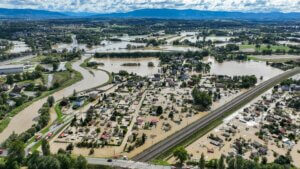
5 Practical Steps for Cities to Boost Public Safety During Emergencies
Emergencies can strike cities without warning, leaving safety in jeopardy. Clear strategies help minimize risks and protect communities during times of crisis.
From enhancing communication to strengthening infrastructure, small steps make a big difference. So, here are five practical steps to take.
-
Establish Real-Time Communication Systems for Public Alerts
Effective communication saves lives during emergencies.
Cities must implement real-time alert systems that provide residents with quick and accurate information. These alerts should include text messages, social media updates, and automated calls to ensure broad reach across diverse groups.
Information needs to be clear and concise—warnings about floods, fires, or evacuations should explain the risk level and immediate actions required. And multilingual support is crucial for non-English-speaking communities.
Coordination with local news outlets enhances these efforts by amplifying messages through TV and radio broadcasts.
When everyone stays informed in real time, confusion decreases, and emergency responses become more efficient across neighborhoods.
-
Enhance Infrastructure Resilience Against Natural Disasters
Climate change is increasing the frequency and severity of natural disasters. Cities must strengthen infrastructure to withstand these challenges, reducing damage and protecting public safety.
Flood-prone areas benefit from improved drainage systems, while regions facing wildfires need fire-resistant materials in buildings.
Bridges, power grids, and water facilities should undergo regular inspections to identify weaknesses before disasters strike.
Investing in green solutions—such as planting trees or creating wetlands—helps absorb excess water during floods while also improving urban environments.
Proactive planning reduces recovery costs after events like hurricanes or earthquakes.
Resilient infrastructure not only safeguards lives but also ensures cities can rebound quickly after a crisis.
-
Implement Community Training Programs for Crisis Readiness
A prepared community responds faster and more effectively during emergencies. Therefore, cities should offer training programs to educate residents on basic first aid, evacuation protocols, and the locations of emergency resources.
Workshops can focus on specific threats common to the area, such as earthquakes or severe storms. These sessions empower individuals with practical skills such as using fire extinguishers or recognizing warning signs of danger.
Partnering with schools, workplaces, and local organizations helps broaden participation.
Engaging volunteers to lead neighborhood response teams builds stronger networks for immediate action.
When people know what to do before professional help arrives, overall safety improves significantly during critical moments.
-
Develop an Accessible Plan for Vulnerable Populations During Crises
Cities should create clear, accessible plans to protect those with disabilities, seniors, and others needing additional assistance.
Emergency shelters must meet the mobility needs of individuals, and communication channels should include sign language interpreters or translated materials.
Prioritizing accessibility saves lives and prevents chaos during critical moments.
Personal injuries may arise during emergencies, too. And questions could follow about timelines for matters like settlements, such as ‘how long after a settlement do I get paid?’—making it essential to have support resources in place beforehand.
Preparedness ensures that everyone gets help when they need it most.
-
Deploy Technology to Map and Monitor High-Risk Areas
Lastly, cities should leverage technology to identify and manage high-risk zones.
Tools like Geographic Information Systems (GIS) enable authorities to track floodplains, wildfire-prone regions, or areas susceptible to extreme weather events.
Drones provide real-time aerial views during emergencies, helping first responders assess damage or locate individuals in need of assistance.
Predictive modeling software can forecast potential risks based on climate trends, enabling cities to prepare proactively for these risks.
Integrating these tools into emergency planning ensures quicker responses and minimizes harm.
With the right technology in place, risk becomes more manageable even during chaotic situations.
Wrapping Up
Prepared cities save lives during emergencies. With strong communication, resilient infrastructure, and community training, public safety improves dramatically.
Proactive steps today ensure faster responses and reduced harm tomorrow—building safer environments for everyone when crises arise.